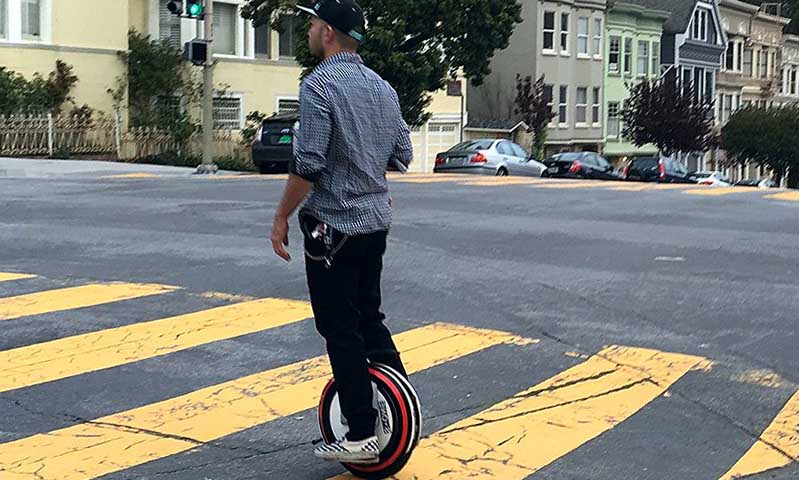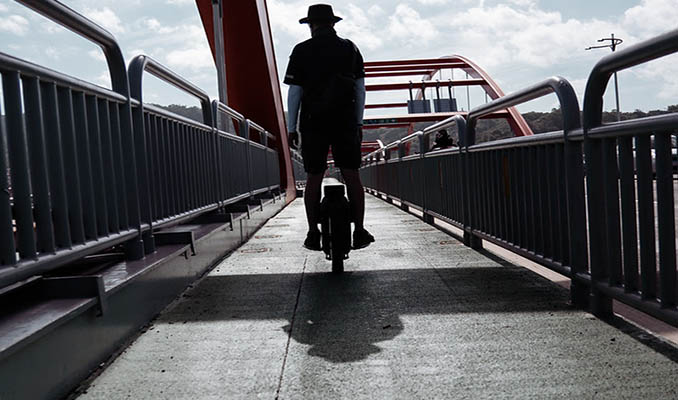Electric unicycles have gained popularity over the years as a fun and convenient mode of transportation. They’re eco-friendly, compact, and thrilling to ride. However, like any personal transport device, electric unicycles can sometimes suffer from performance issues, such as slow speed. In this article, we’ll explore the reasons why your electric unicycle might be going slow and provide helpful tips on how to fix it.
Contents
- What is Electric Unicycle?
- Why is My Electric Unicycle Going Slow?
- Battery-Related Issues and Solutions
- Motor and Controller Problems Affecting Speed
- Tire and Wheel Factors Contributing to Slow Speed
- Calibration and Firmware Issues
- Weight and Rider Impact on Electric Unicycle Performance
- Environmental Factors and Terrain Challenges
- Tips for Optimal Electric Unicycle Speed
- Conclusion
- Frequently Asked Questions
What is Electric Unicycle?
Electric unicycles are single-wheeled, self-balancing personal transport devices that run on electricity. They are operated by the rider’s body movements – leaning forward to accelerate, leaning back to brake, and shifting side to side for turning. They typically have a range of anywhere from 15 to 60 miles on a single charge, depending on the model and battery capacity.
These unique devices are popular among urban commuters and enthusiasts who appreciate their compact size and maneuverability. Electric unicycles offer a fun alternative to traditional bicycles, scooters, and skateboards, and they can be used for both daily commutes and recreational purposes.
Why is My Electric Unicycle Going Slow?
There are several factors that can contribute to a slow electric unicycle, ranging from battery-related issues to tire and wheel factors. Understanding the root cause of the problem is essential for finding the right solution and getting your unicycle back up to speed.
In the following sections, we’ll explore some of the most common reasons for slow electric unicycle performance and provide actionable tips on how to address them.
Related:
One of the most common reasons for a slow electric unicycle is a battery-related issue. The battery is the heart of your unicycle, supplying power to the motor and other essential components. If your battery is not functioning at its optimal capacity, it can result in sluggish performance and reduced speed.
Here are some battery-related issues that could be causing your electric unicycle to go slow:
- Battery age and degradation: Over time, batteries lose their capacity to hold a charge, which can result in reduced performance. To keep your electric unicycle running smoothly, it’s essential to replace the battery once its capacity has significantly declined. Check the manufacturer’s guidelines for battery replacement intervals.
- Battery temperature: Extreme temperatures can negatively impact battery performance. When it’s too cold, the battery’s internal resistance increases, which can reduce its capacity to deliver power. On the other hand, when it’s too hot, the battery can overheat and shut down. To prevent temperature-related issues, store your electric unicycle in a cool, dry place and avoid exposing it to direct sunlight for prolonged periods.
- Improper charging practices: Overcharging or undercharging your battery can lead to reduced performance and, in some cases, permanent damage. Follow the manufacturer’s guidelines for charging your electric unicycle, and never use a charger that isn’t compatible with your device.
Motor and Controller Problems Affecting Speed
Another possible reason for a slow electric unicycle is an issue with the motor or controller. These components work together to control the power and speed of your unicycle, so any problems can directly impact its performance.
- Motor issues: Motors can wear out over time or become damaged, leading to reduced speed and efficiency. If you suspect a motor issue, consult a professional technician or the manufacturer for repair or replacement options.
- Controller problems: A faulty controller can cause power delivery issues, resulting in slow performance. If your unicycle’s controller is malfunctioning, it may need to be replaced or repaired by a professional.

Tire and Wheel Factors Contributing to Slow Speed
Your electric unicycle’s tires and wheels play a crucial role in its overall performance. Issues with these components can lead to slow speed and an unstable ride.
- Low tire pressure: Low tire pressure can cause increased rolling resistance, making it harder for your unicycle to maintain speed. Check your tire pressure regularly and inflate them to the manufacturer’s recommended level.
- Worn or damaged tires: Worn or damaged tires can create an uneven, unstable ride and reduce your unicycle’s speed capabilities. Inspect your tires for signs of wear, such as cracks or excessive tread loss, and replace them if necessary.
- Wheel alignment: Misaligned wheels can cause uneven tire wear and increased rolling resistance, leading to slow speeds. If you suspect your wheels are misaligned, consult a professional technician for assistance.
Calibration and Firmware Issues
Calibration and firmware issues can also contribute to slow electric unicycle performance. These problems can affect the unicycle’s responsiveness and overall speed capabilities.
- Incorrect calibration: If your unicycle is not calibrated correctly, it may not respond to your body movements as intended, leading to slow speeds and reduced performance. Consult your user manual for instructions on how to calibrate your electric unicycle properly.
- Outdated firmware: Manufacturers often release firmware updates to improve performance and address known issues. If your unicycle’s firmware is outdated, it may not be functioning at its full potential. Check for firmware updates regularly and install them as needed.
Weight and Rider Impact on Electric Unicycle Performance
The weight of the rider and any additional cargo can also affect the speed of an electric unicycle. Heavier loads place increased strain on the motor and battery, which can result in slower speeds.
- Exceeding weight limits: Always adhere to the manufacturer’s recommended weight limits for your electric unicycle. Exceeding these limits can lead to slow speeds and potential damage to the device.
- Improper riding technique: Developing proper riding technique is essential for maximizing your electric unicycle’s performance. Leaning too far forward or backward can cause instability and slow speeds. Practice proper riding posture and technique to improve your unicycle’s responsiveness and speed.
Environmental Factors and Terrain Challenges
The environment and terrain you’re riding on can also impact your electric unicycle’s speed.
- Headwinds: Riding into strong headwinds can significantly reduce your unicycle’s speed. If possible, plan your route to minimize exposure to strong winds.
- Uphill terrain: Climbing steep hills can put extra strain on your unicycle’s motor and battery, resulting in slower speeds. When tackling uphill terrain, maintain a steady pace and avoid sudden acceleration.
- Uneven or loose surfaces: Riding on uneven or loose surfaces, such as gravel or sand, can increase rolling resistance and reduce speed. Stick to smooth, paved surfaces for optimal performance.
Tips for Optimal Electric Unicycle Speed
To ensure your electric unicycle is operating at its full potential, follow these tips:
- Perform regular maintenance, such as checking tire pressure and inspecting for wear and damage.
- Keep your unicycle’s battery in good condition by following proper charging practices and storing it in a cool, dry place.
- Update your unicycle’s firmware as needed to ensure optimal performance.
- Practice proper riding techniques and adhere to the manufacturer’s recommended weight limits.
- Plan your route to minimize exposure to headwinds and challenging terrain.
Conclusion
Understanding why your electric unicycle is going slow and taking the necessary steps to address the issue is essential for a faster, smoother ride.
By following the tips and guidelines outlined in this article, you can identify the root cause of your unicycle’s slow performance and take the appropriate actions to get it back up to speed.
With proper maintenance, care, and riding technique, you’ll be able to enjoy a thrilling, efficient ride on your electric unicycle for years to come.
Frequently Asked Questions
How do you accelerate an electric unicycle?
To accelerate on an electric unicycle, you typically lean forward slightly or apply pressure to the foot pedals. The built-in sensors detect your body movements and adjust the speed accordingly. It’s important to start with slow acceleration and gradually increase speed as you gain confidence and maintain balance.
How fast will an electric unicycle go?
The speed of an electric unicycle can vary depending on the model and specifications. Most electric unicycles have a top speed ranging from 10 to 25 mph (16 to 40 km/h). However, it’s crucial to adhere to local traffic laws and regulations, as well as consider your own safety and skill level when riding at high speeds.
What is the world’s fastest unicycle?
As of my knowledge cutoff in September 2021, the current recognized world record for the fastest electric unicycle speed was set by Denis Shapovalov, reaching a speed of 61.18 mph (98.45 km/h) in 2020. Please note that records can be broken, and new developments may have occurred since then.
Can a low battery affect the speed of my electric unicycle?
Yes, a low battery can affect the speed and performance of your electric unicycle. As the battery charge decreases, the available power to the motor decreases as well, resulting in reduced speed and decreased overall performance. It’s important to monitor your battery level and plan your rides accordingly to avoid potential issues.
Is it safe to modify my electric unicycle?
Modifying an electric unicycle can be risky and may void the manufacturer’s warranty. Altering the components or electronics of the unicycle without proper knowledge and expertise can lead to safety hazards and potential malfunctions. It is generally recommended to avoid unauthorized modifications and consult with the manufacturer or an authorized dealer if you have specific customization needs.
Can ride uphill damage my electric unicycle?
Electric unicycles are designed to handle inclines and riding uphill should not cause damage on its own. However, sustained and excessively steep inclines can put additional strain on the motor and battery, potentially leading to increased heat and reduced overall performance. It’s advisable to check the manufacturer’s recommendations for the maximum incline capabilities of your specific electric unicycle model and avoid pushing it beyond its limits to prevent any potential damage.


